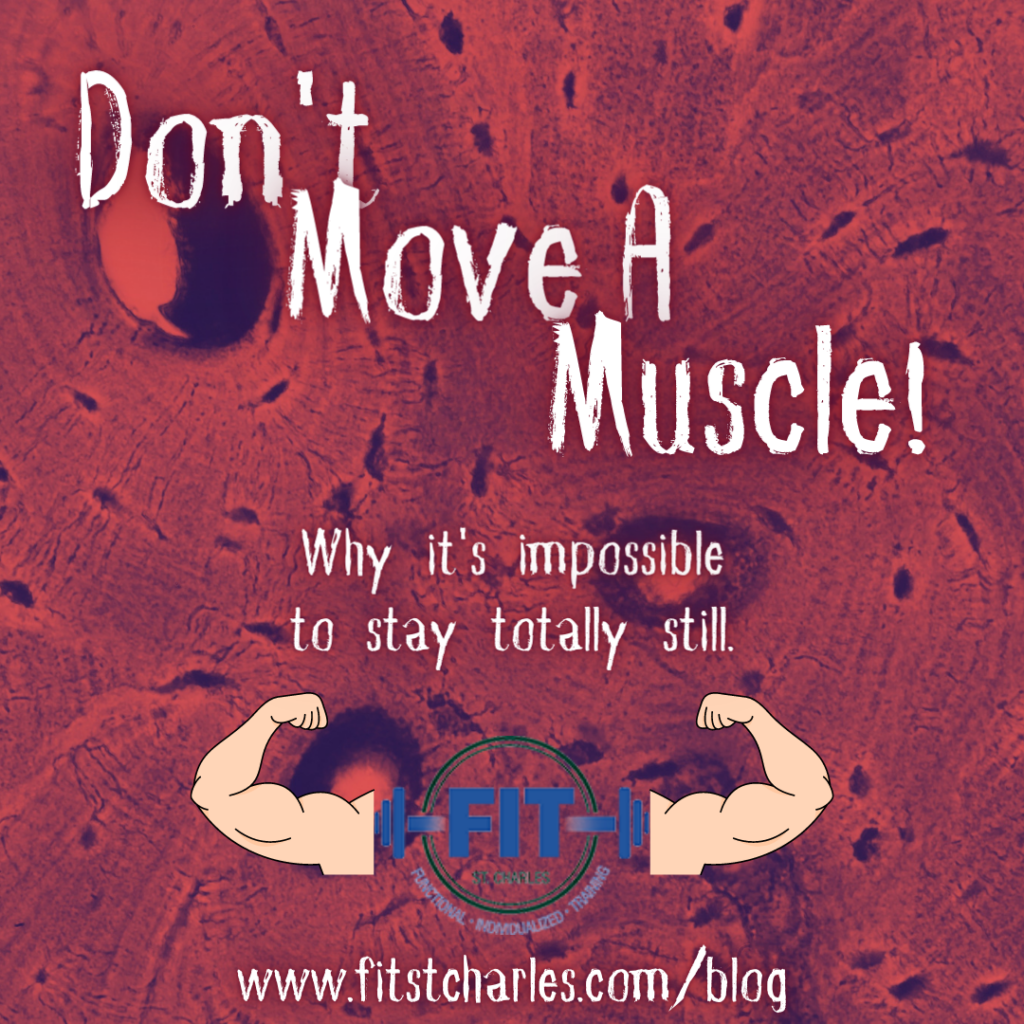
Have you ever thought of the implications of telling someone “don’t move a muscle”? It might be a little darker than you had intended…
You might think that you have control over all of the muscles in your body, but even when you are sitting still, your muscles are always moving. Try this- hold your breath for a few seconds and stay as still as possible. Were you able to hold completely still? Even if you didn’t “move a muscle”, there were many muscles still actively moving in your body! And you can’t stop it! Why, you might ask?
To put it plainly, the muscles we usually think about are only 1 of 3 muscle groups in our body. Your skeletal muscle, there are over 600 of those, at least that’s what scientists estimate, are what helps you physically navigate throughout the world. Their contractions move your limbs and support your bones
So what about the other two? Well, the other two groups- cardiac and smooth muscle- are what moves things INSIDE of your body. And while the only cardiac muscle makes up the heart, there are billions of smooth muscles. So what is smooth muscle?
Smooth muscle, also called involuntary muscle, is at a cellular level. Unlike cardiac and skeletal muscle, this type of muscle shows no cross stripes under microscopic magnification. Instead it consists of a narrow spindle-shaped cell with one nucleus. Also unlike other muscles, it contracts slowly and automatically. And we should be glad that smooth muscle is automatic- it constitutes most of the musculature of your internal organs and digestive system. Basically, smooth muscles are lining all of your organs. So while you are sitting very still, all those cells lining your intestines are slowly pushing food throughout your body, making your other organs work properly, helping blood move around your body, and helping you see (the internal eye muscles are smooth muscle too!).
Guess what, though? Even with smooth muscle aside, your cardiac muscle (heart) moves automatically, which we are all thankful for. On top of that, we aren’t even aware of some of the movements that our skeletal muscles make, either. The external muscles of the eye, for example, are alway moving back and forth, repositioning the eye. When your head is in motion, your external muscles are constantly adjusting the position of your eyes to maintain a steady fixation point. And then there are muscle twitches, which we also cannot control. These involuntary muscle spasms are often caused by stress, lack of sleep, too much caffeine, or certain medications.
So next time you are sitting still, take a moment to thank all of the muscles in your body that don’t get a chance to relax- they keep you alive, after all!
